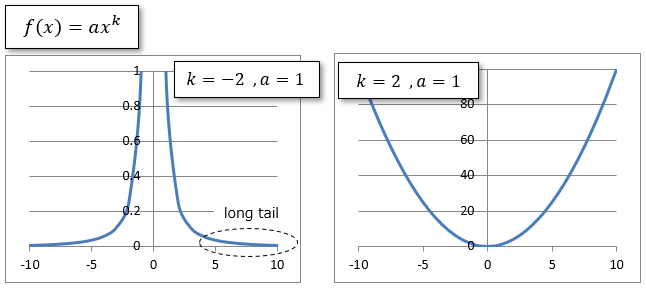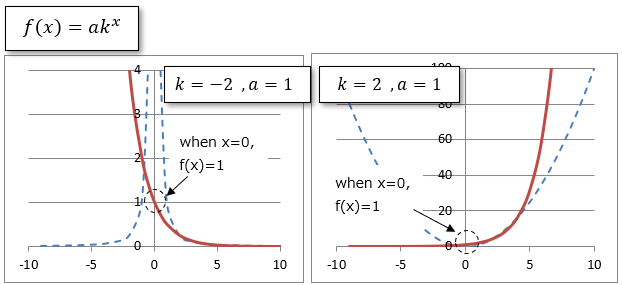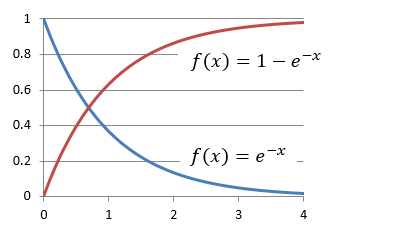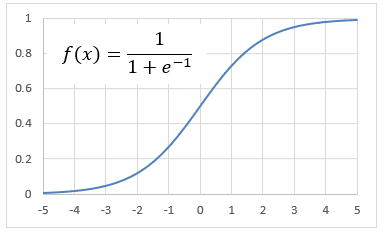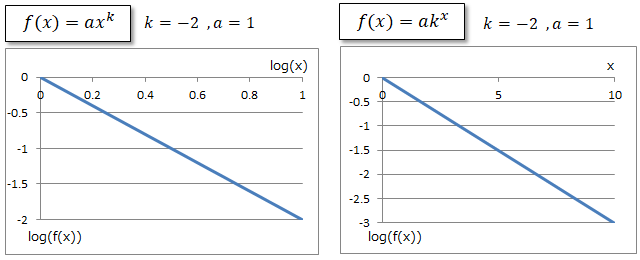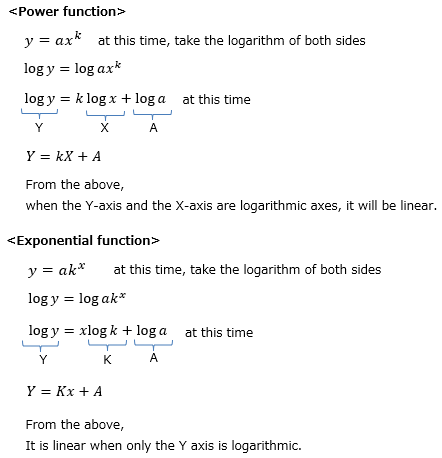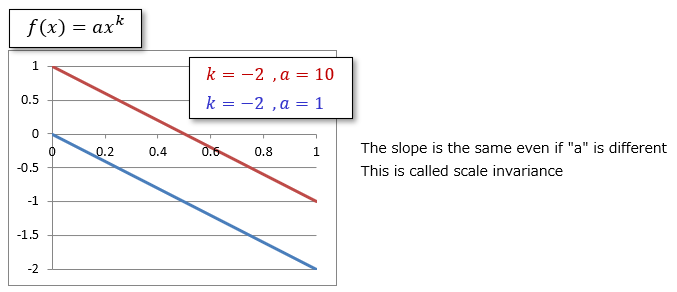Exponential function , Power function |
||||
・Exponential function ・Arctan, tanh ・Matrix multiplication ・Transposed matrix ・Fourier transform ・Fast Fourier Transform ・Matrix derivative ・Manhattan/Euclidean distance ・Centroid ・Vertical bar ・Gaussian integral ・Cosine similarity ・summation Σ, product Π ・Decibel[dB] ・Numerical Differention ・Induction,deduction,abduction ・Spline curve ・Lagrange's Method of Undetermined Multipliers ・Purpose of the matrix ・Proof by contradiction ・Vector field |
・In Japanese
■What is a exponential?
The exponent is defined as follows. ■What is a power function?
The power function is a kind of exponential function and is expressed by the following formula.The base is a variable and the exponent is a constant.
■What is an exponential function?
The exponential function is expressed by the following formula.
It shows the comparison with the power function (red line is the exponential function).
The exponential function converges or diverges faster depending on the value of x. ■Expressing power functions and exponential functions in logarithms
When the power function expresses the x-axis and y-axis with the logarithmic axis, and the exponential function expresses only the y-axis with the logarithmic axis, it shows linear characteristics as shown below.
By using this property, it is possible to judge whether data with a certain characteristic follows a power function or exponential function by seeing whether it is linear in a logarithmic graph. <scale invariance of power law functions>
The following is "a" comparison of the characteristics of the power function when "a" is changed.
This means that the degree of attenuation is the same even if the value of "a" is different.
This is called scale invariance.
|
|
||

